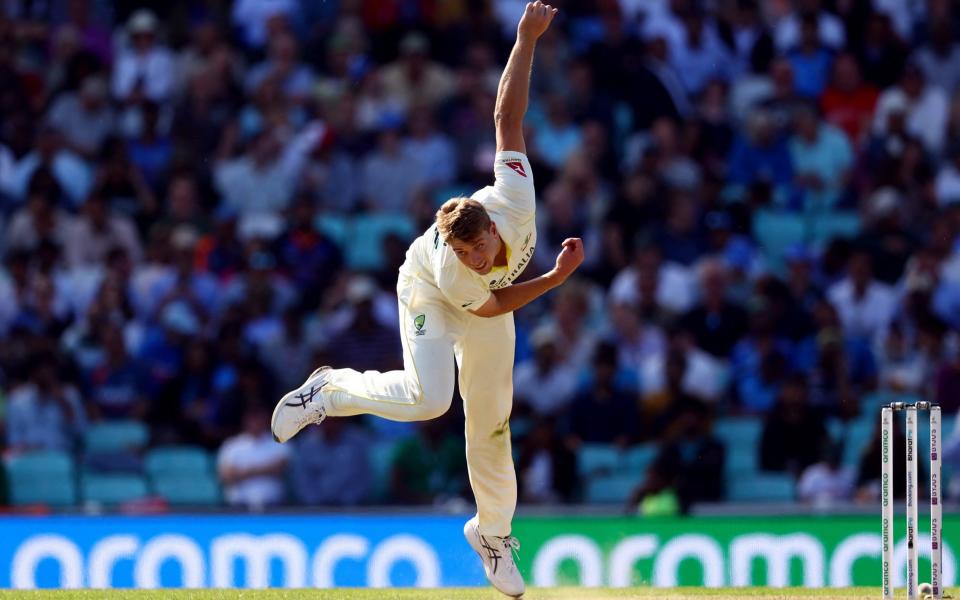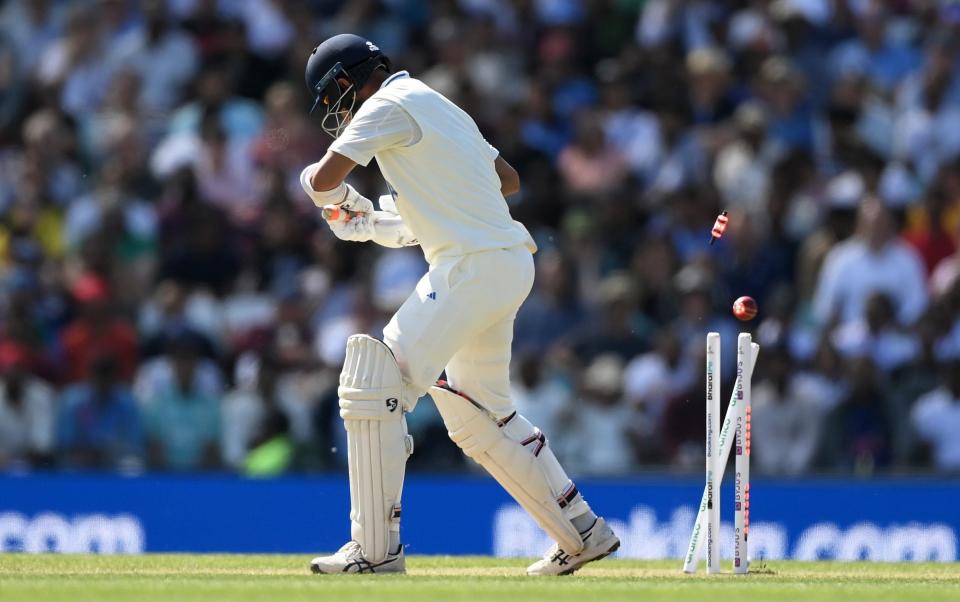Australia's relentless five-man attack in ominously fine fettle

As Australia marched towards a formidable total of 469, a loose, ugly drive ended Cameron Green’s first ever innings in England on just six. The 24-year-old’s brief stay at the crease betrayed the difficulty for young players swapping between the formats.
But, as Australia took full control of the World Test Championship final, the giant all-rounder’s huge value to this team’s tilt at history this summer – first here, then in the Ashes – was clear as day.
India closed on 151 for five, with all five wickets falling to a different member of this relentless Australian attack. When Nathan Lyon used to play alongside three quicks, as he did on Australia’s last tour of England, they were superb. The addition of Green has added a new dimension, and not just because he is the tallest of them all.
Green’s presence allows Pat Cummins – who picked up the first wicket, his opposite number Rohit Sharma – to rotate his quicks more cutely. Mitchell Starc’s radar was a little off early on, so Scott Boland was brought into the attack, and nipped one into Shubman Gill’s off-stump. After tea, it was Green’s turn and, in his second over, Cheteshwar Pujara was bowled shouldering arms to a beautiful ball.

Starc would return, having done a bit of thinking at fine leg, and bowl the delivery of the day to get the biggest wicket, Virat Kohli. From nowhere, the ball reared up at Kohli, taking the edge, with the centurion Steve Smith doing the rest, leaping high at second slip. This might have looked like chance, but Starc had run his fingers down the side of the ball, creating the elevation. In the final over of the day, soon after Lyon had snared Ravi Jadeja, the obdurate Ajinkya Rahane received a similar delivery (having earlier received a reprieve from a Cummins no-ball). By then, a large number of fans had left, mainly because Kohli was out.
Starc played just a single Test on the 2019 tour, in the win at Old Trafford, because it was felt that, in English conditions, he can be too leaky. While Starc is simply an improved bowler, the presence of Green changes that dynamic further: Starc can be used in short bursts at appropriate moments while others do the donkey work. Sharing the overs out gives Australia’s other quicks a better chance of playing more of these six Tests in seven weeks each. Remember they have Josh Hazlewood and perhaps Michael Neser to rotate in, too.
The battle of the all-rounders is an intriguing subplot of the upcoming Ashes. Ben Stokes is the celebrated legend of the game, boasting a backlog of Ashes deeds with ball as well as bat. Will he be able to repeat them? His confidence is admirable but, as he battles tendonitis, the evidence is scant. Green, meanwhile, looks fit as a fiddle, and capable of testing England’s batsmen in various ways. According to CricViz, he bowled shorter than Australia’s other bowlers, but found more seam movement than anyone, including Boland. With uneven bounce, his height will become more of an asset as this game, and this increasingly dry summer, drags on.
That Green guards the gully region like a goalkeeper and is a sound enough Test batsman to have made a century in Ahmedabad makes him a very ominous package this summer. The early evidence is that he takes time to find his batting touch when a new series begins, and that was the case on Thursday. But by the time he came and went, the hard work was done, thanks to Travis Head and Steve Smith’s superb centuries.

 Yahoo Sport
Yahoo Sport 





































